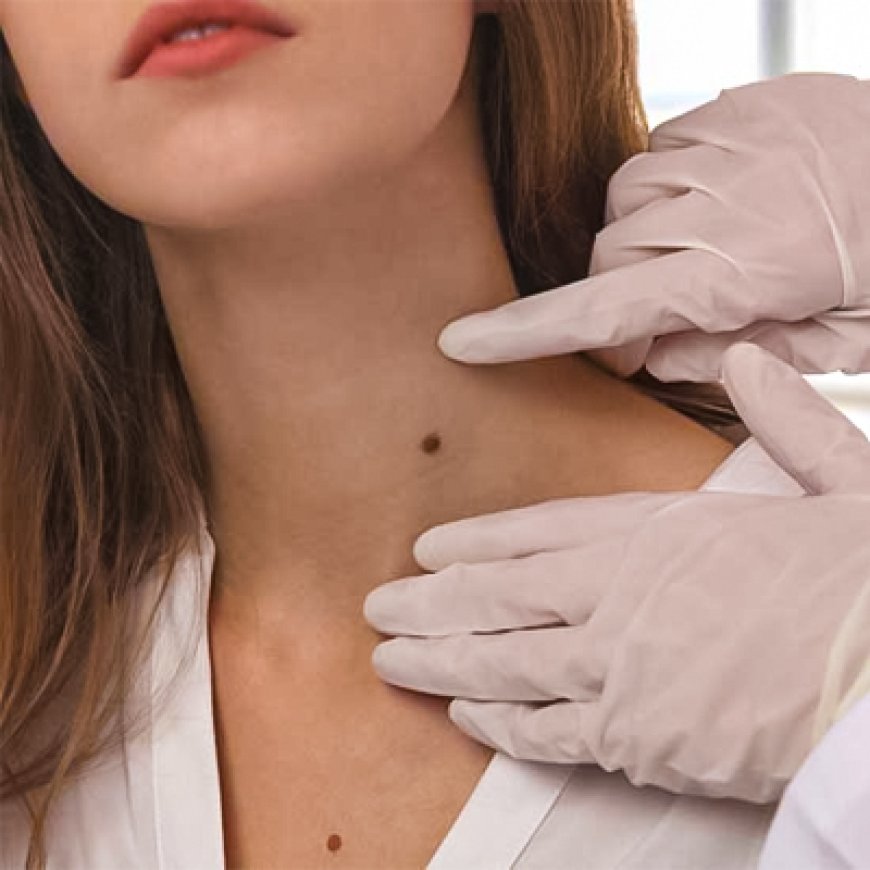How to Care for Your Skin After Mole Removal
Safe and effective mole removal treatments to enhance your skin's appearance. Restore confidence with expert care and advanced techniques.

Mole removal is a common dermatological procedure performed for both cosmetic and medical reasons. While the procedure itself is typically quick and safe, post-treatment care is equally important to ensure proper healing and optimal results. Many patients in Mole Removal Islamabad treatments are not only seeking aesthetic improvements but also want to avoid complications such as scarring, infection, or skin discoloration. Knowing how to care for your skin after mole removal can make a significant difference in recovery and appearance.
In this blog, we'll walk you through everything you need to know about mole removal aftercare—from the initial healing period to long-term skincare strategies.
Why Aftercare Matters
Regardless of the method used—laser, surgical excision, cryotherapy, or radiofrequency—mole removal involves some level of skin disruption. Your body begins to heal the treated area almost immediately, and how you care for it during this time will determine:
-
How quickly you heal
-
Whether or not you develop a scar
-
The risk of infection or pigmentation changes
-
The final appearance of the treated skin
Proper aftercare ensures a smoother recovery and a more aesthetically pleasing outcome.
Immediate Post-Procedure Steps
Immediately following mole removal, your dermatologist or surgeon will typically provide specific aftercare instructions tailored to your treatment. However, general post-procedure guidelines include:
1. Keep the Area Clean and Dry
Avoid getting the area wet for the first 24 hours. Clean the site gently with a saline solution or mild soap and water once allowed. Pat it dry with a clean towel—do not rub.
2. Apply Prescribed Ointments
Your doctor may prescribe antibiotic ointments such as mupirocin or recommend petroleum jelly to keep the area moist. This prevents scab formation and promotes faster healing with minimal scarring.
3. Use a Sterile Bandage
Cover the wound with a clean, sterile bandage for the first few days. Change the bandage daily or more often if it becomes dirty or wet.
Managing Pain, Redness, or Swelling
Mild discomfort, redness, or swelling is common after mole removal. Over-the-counter pain relievers like acetaminophen or ibuprofen can help manage pain. Avoid using aspirin unless directed by your doctor, as it may increase bleeding.
If the redness increases or you notice pus, excessive swelling, or a foul odor, contact your healthcare provider—these could be signs of an infection.
Things to Avoid During Recovery
What not to do is just as important as what to do:
-
Don’t pick at the wound or scab – this can delay healing and cause scarring.
-
Avoid sun exposure – UV rays can cause hyperpigmentation on the healing skin.
-
Avoid swimming pools, hot tubs, and saunas – these environments can introduce bacteria and increase infection risk.
-
Avoid makeup and skincare products on the area – until the wound is fully healed, avoid applying anything unless approved by your dermatologist.
Scarring: How to Minimize It
While most mole removals heal with minimal scarring, some individuals may be more prone to keloids or pigmentation issues. Here are a few ways to minimize scarring:
1. Silicone Gel or Sheets
These can be applied once the wound has closed completely. Silicone products hydrate the scar tissue and flatten raised scars over time.
2. Sun Protection
Use a broad-spectrum SPF 30 or higher sunscreen once the area is healed. Sun exposure can darken the scar and make it more noticeable.
3. Scar Creams
Products containing ingredients like vitamin E, onion extract, or centella asiatica may help fade scars, though their effectiveness varies between individuals.
4. Follow-Up Appointments
Attend any scheduled check-ups so your dermatologist can monitor healing and address concerns early.
Healing Timeline: What to Expect
Everyone’s skin heals differently, but a general timeline looks like this:
-
First 1–2 days: The area may be sore or slightly red.
-
Days 3–7: A scab forms if not kept moist. You may feel itching as the wound starts to heal.
-
Week 2–3: The outer layer of skin closes. Any stitches (if used) may be removed.
-
Weeks 4–8: Redness fades, and scar tissue begins to form and flatten.
-
After 2–3 months: Scar maturation begins, with most scars fading significantly by 6 months.
Consistency in aftercare significantly improves the overall result.
Special Considerations Based on Removal Method
Different removal techniques may require slight variations in care:
-
Laser Removal: Avoid sun exposure and skip exfoliants for at least a week. You might not have an open wound, but the skin may still be sensitive.
-
Surgical Excision: Requires more rigorous wound care due to stitches. Keep the area protected and avoid heavy physical activity that may strain the sutures.
-
Cryotherapy: Expect blistering. Let the blisters heal naturally and avoid popping them.
-
Radiofrequency: Healing is generally fast, but post-treatment redness may last slightly longer than with laser.
Long-Term Skin Maintenance
After your mole removal area has healed, consider adjusting your skincare routine to maintain smooth, clear skin:
-
Moisturize regularly to improve texture and prevent dryness.
-
Exfoliate gently after the wound has fully healed to maintain even skin tone.
-
Monitor your skin for new moles or changes to existing ones. Schedule routine skin checks annually.
When to Contact Your Dermatologist
Reach out to your healthcare provider if you notice:
-
Persistent redness or swelling
-
Yellow or green discharge
-
Pain that worsens instead of improving
-
Delayed healing (still open after 3 weeks)
-
Any suspicious changes in nearby skin
Prompt medical attention ensures any complication is managed quickly and effectively.
Conclusion
Caring for your skin after mole removal is crucial for both your health and cosmetic results. Whether your mole was removed for medical or aesthetic reasons, following a proper aftercare routine can help prevent infections, minimize scarring, and promote a smooth, even skin tone.
Choosing a qualified and experienced clinic ensures the procedure and aftercare guidance are handled professionally. If you’re considering or have recently undergone mole removal, expert care is key to successful healing.
For those seeking reliable services in Islamabad, Mole Removal Islamabad offers comprehensive treatment options under professional supervision. At the SKN Cosmetics clinic, you’ll receive not only safe and modern mole removal procedures but also personalized guidance on post-treatment skincare to help you look and feel your best.
What's Your Reaction?
 Like
0
Like
0
 Dislike
0
Dislike
0
 Love
0
Love
0
 Funny
0
Funny
0
 Angry
0
Angry
0
 Sad
0
Sad
0
 Wow
0
Wow
0


































